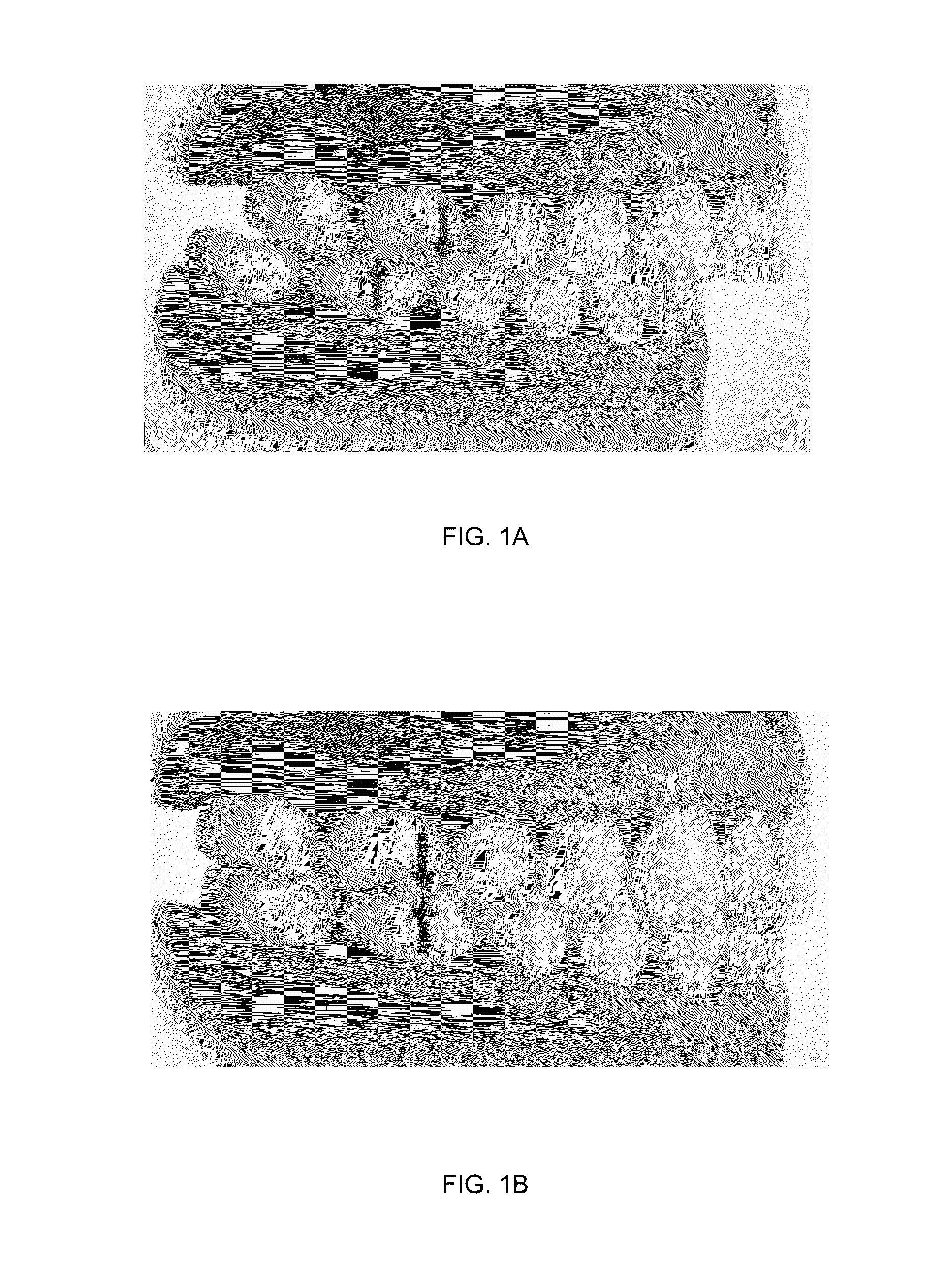Mandibular attachment for correction of malocclusion
a technology for mandibular attachment and malocclusion, which is applied in the field of orthodontics, can solve problems such as complicated design of appliance application
- Summary
- Abstract
- Description
- Claims
- Application Information
AI Technical Summary
Benefits of technology
Problems solved by technology
Method used
Image
Examples
Embodiment Construction
[0013]Class II malocclusion occurs in approximately 33% of the general population in the United States and presents a challenge for the orthodontist. In reference to FIG. 1A, Class II malocclusion occurs when the lower jaw is deficient in length and sits behind the upper jaw. Not only can this compromise proper function, but often times can be a contributing factor to a less attractive smile and profile appearance. FIG. 1B presents, for comparison, a depiction of normal occlusion (Class I). Historically, a Class II occlusion has been treated effectively with headgear appliances that are best utilized when a patient is a still-growing child. The conventional headgear serves to maintain the position of the upper jaw while the lower jaw expresses its natural growth in a forward direction, and therefore correcting the occlusion. However, the downside of the headgear appliance is that it is unattractive, and its success is entirely dependent upon patient compliance; something that has be...
PUM
 Login to View More
Login to View More Abstract
Description
Claims
Application Information
 Login to View More
Login to View More - R&D
- Intellectual Property
- Life Sciences
- Materials
- Tech Scout
- Unparalleled Data Quality
- Higher Quality Content
- 60% Fewer Hallucinations
Browse by: Latest US Patents, China's latest patents, Technical Efficacy Thesaurus, Application Domain, Technology Topic, Popular Technical Reports.
© 2025 PatSnap. All rights reserved.Legal|Privacy policy|Modern Slavery Act Transparency Statement|Sitemap|About US| Contact US: help@patsnap.com



